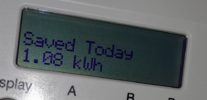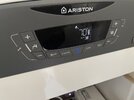I'm after some advice for improving HW temperature in a semi-detached property. The property is running a 24kw regular boiler (boiler is less than 2 years old) supplying both CH and HW in a low-pressure vented arrangement.
I don't have a high demand of HW as there is only one shower bath in the house. Primary HW usage is for taking 1 or 2 showers in the afternoon/evening. I use a Tado system to control CH and HW. Every morning I turn on HW for about 30 minutes (aim is to replenish hot water consumed the night before), and HW is switched on again for 30 minutes before someone takes a shower in the afternoon/evening.
During shower, I barely need any cold water input from the non-thermostatic mixer tap as the HW is just enough hot (though my cylinder's thermostat is set at 60C). This makes me wonder if the cylinder is storing HW at a temperature hot enough to reduce health risk from Legionella.
The questions that I have are:
- should I drastically increase the boiler's flow temperature in order to make HW hotter? Currently I use the boiler's Auto function. I can see the boiler adjusting the flow temperature on its own and oftentime it is running at around 60C. Problem is the boiler doesn't seem to allow me to control what temperature is to be used for CH and HW separately.
- is my HW schedule not long enough to heat up the 120l cylinder? I tried heating the water for a longer time before shower but I didn't seem to get much hotter HW output.
- is it necessary at all to use the immersion heater?
Thanks in advance!
I don't have a high demand of HW as there is only one shower bath in the house. Primary HW usage is for taking 1 or 2 showers in the afternoon/evening. I use a Tado system to control CH and HW. Every morning I turn on HW for about 30 minutes (aim is to replenish hot water consumed the night before), and HW is switched on again for 30 minutes before someone takes a shower in the afternoon/evening.
During shower, I barely need any cold water input from the non-thermostatic mixer tap as the HW is just enough hot (though my cylinder's thermostat is set at 60C). This makes me wonder if the cylinder is storing HW at a temperature hot enough to reduce health risk from Legionella.
The questions that I have are:
- should I drastically increase the boiler's flow temperature in order to make HW hotter? Currently I use the boiler's Auto function. I can see the boiler adjusting the flow temperature on its own and oftentime it is running at around 60C. Problem is the boiler doesn't seem to allow me to control what temperature is to be used for CH and HW separately.
- is my HW schedule not long enough to heat up the 120l cylinder? I tried heating the water for a longer time before shower but I didn't seem to get much hotter HW output.
- is it necessary at all to use the immersion heater?
Thanks in advance!




